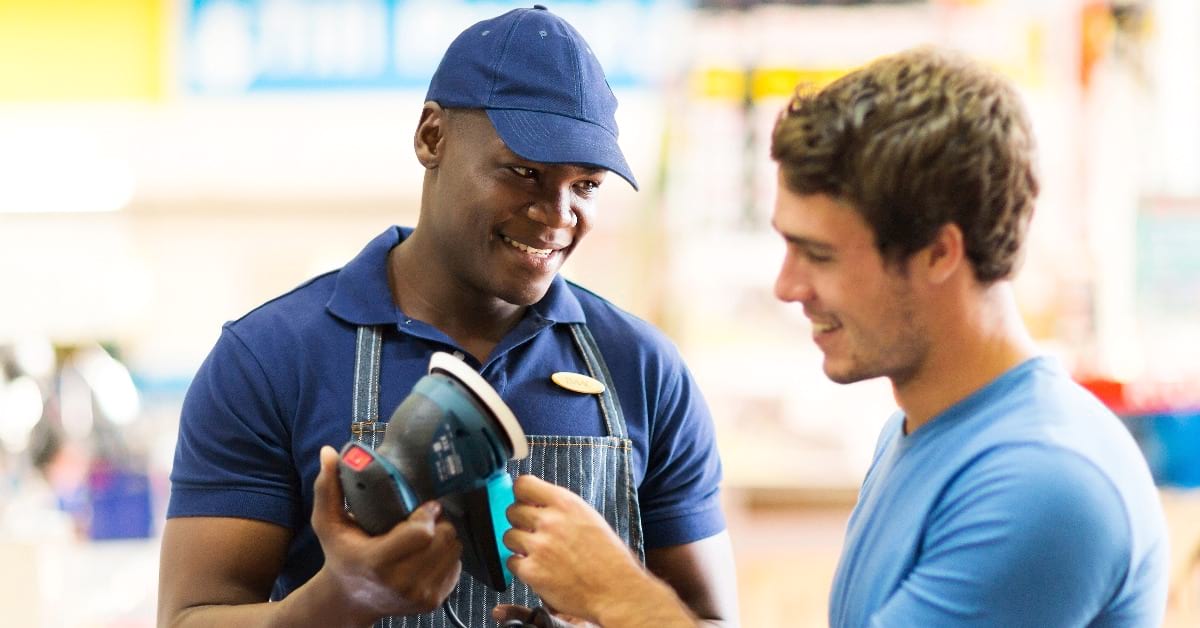More shoppers are venturing out to do their holiday shopping in person, and more are purchasing goods and services they can use outside of quarantine. According to Deloitte’s annual forecast, 2021 holiday retail sales are expected to climb 7 to 9 percent this year over last.
Despite the good news for the retail sector, most retailers are having trouble stocking their full product lines. This is due to supply chain issues, including a shortage of raw materials, shipping delays, and too few warehouse workers and truckers.
Lack of supply coupled with high demand is driving prices higher. It all mixes together into a recipe for extreme consumer frustration this holiday season.
But it won’t just be customers who feel disappointed and upset. Many retail employees who work this holiday season will do so in understaffed and overcrowded stores.
The good news is that simply by using tools and practices that improve customer communications, retailers can set up both their employees and store visitors for a more successful shopping season.
3 Ways to Improve Customer Communications
These three strategies can help frontline retail workers keep customers happy, even when circumstances aren’t ideal:
Express Empathy
Try to identify with the customer’s core emotion, whether that’s disappointment that an item they expected to see is sold out, or frustration that the price of a product they want has spiked dramatically. Once you identify the core emotion, name it in a sentence like, “I can totally understand your frustration.”
Deliver Accurate Answers Fast
When a customer is getting upset, answering their questions quickly and accurately can go a long way toward diffusing the situation.
Maybe the customer wants to know if another nearby store has the desired item in stock. Or maybe the customer wants to escalate their problem to a manager and would like you to produce one, pronto.
Whatever the request, it’s important for store managers to set their employees up for success with the right tools so they can respond as quickly as possible. We’ll go into greater depth on that below .
Keep Attention on the Customer
Diverting attention from an upset customer can easily escalate the situation—even if you’re making a phone call or sending a text or consulting your manager in an effort to provide answers to their questions.
It’s just human nature that when someone we are talking to shifts attention to a device or another person, we feel annoyed. So try your best to maintain eye contact with the customer as much as possible, and as you seek information to help them, make any interactions with others as subtle as possible.
And never allow another customer to interrupt you “for just a minute” while you’re helping someone else.
How Zello Improves Customer Service
In anticipation of the intensity of the coming holiday season, many retailers are turning to Zello to provide high-quality customer interactions.
Instant Connections
The easy-to-adopt app requires no advanced training and can run on employees’ mobile phones or tablets owned by the store. Zello allows retailers to instantly connect to the person in the shop who has the correct information.
For example, workers at all Restoration Hardware stores wear bluetooth headsets connected to the Zello app. Now, when a customer goes to the customer service desk with a question about whether a particular fabric is available for a sofa that’s on the floor, the person at the desk simply presses the push-to-talk button on their tablet. The app either connects directly to the person they’re looking for or puts out a call in a department or team channel where that person is more likely to be — and if they’re not currently listening, another teammate on that channel can help them
There’s no dialing and redialing or calling out repeatedly on open radio channels to locate the person who knows the answer to this question. Also, there’s no need to disrupt the shopping ambience with an overhead page or for that employee to run around the store to locate that person.
No Disruptions
Note that the employee at the register never needs to:
- Leave the register either to track down a coworker or check the sample fabrics beside the sofa.
- Look up a phone number to try to reach a colleague.
- Spend time typing a text message or email.
- Page a coworker for assistance.
Quick Communications
Instead, using Zello, the customer service worker quickly connects to the right salesperson on the floor, quietly asks the question, and then delivers the accurate answer, all while keeping her focus where it belongs—on the customer.
Because Zello accelerates customer interactions, frontline workers can help customers more quickly, which enhances overall customer satisfaction.
Better Coverage
Stores that use radio for communication often have trouble reaching everywhere in the store, and they can be almost useless in curbside and loading situations, where employees are often moving from inside to outside the store. Cell coverage can also be weak in big box stores especially where there are frequently dead spots.
Zello works on both WiFi and cell networks (and on as low as 2G bandwidth at that). Stores that set up in-store WiFi will benefit from universal coverage within the store, while empowering employees to move outside to the curb or a loading bay. Employees can seamlessly switch to cellular coverage with no disruption in service. This keeps operations smooth, seamless, and connected, which again helps employees deliver products, answers, attention, and purchases to customers quickly.
Emergency Alerts
Finally, if there’s ever a customer interaction that’s concerning, a frontline employee can press an emergency alert on the Zello app to call for help. This way, retail employees are never truly alone with store visitors.
Better Communication = A Happier Holiday Shopping Season
This holiday season, store leaders who equip team members with efficient and effective communications tools will set up their frontline workers for success.
When frontline workers have the solution they need for quiet, quick and accurate communications, they can provide outstanding customer service. They can better focus their attention on customers, find more detailed and effective answers more quickly, locate what may have become rare stock, and spend more time listening than scrambling. That will go a long way towards helping lower the temperature in a retail atmosphere during what is likely to be a tense holiday season.

